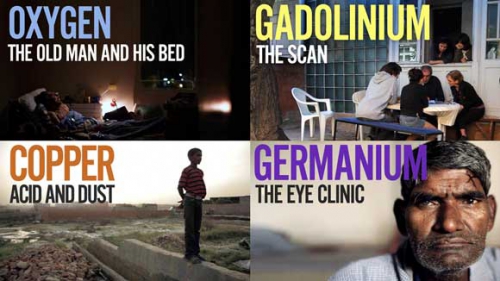94 Elements is: "A global filmmaking project exploring our lives through the lens of the elements, from Hydrogen to Plutonium."
If you're interested, you've got a week left to get involved and fund an elemental film.

Mike Paterson, the brains behind 94 Elements, is looking for crowdsourced funding through his Indiegogo campaign page, at
http://www.indiegogo.com/94elements.
You can get involved by pledging anything from $10, up (the site is US-based, but Paterson is UK-based). With your pledge you can score a laser-cut element wood block, an ampoule of a pure element (save one or two of the hairier ones...), lovely element-inspired screen prints, and more.
Paterson clearly knows that stories can be a powerful way of getting across the science behind an idea as fundamental as the periodic table of elements. The films he plans to make for 94 Elements will focus on those stories.
With our successful, and snazzy,
Visual Elements Periodic Table we also know that stories are key to engaging students.
One of the most popular features of the site, which we've demonstrated to hundreds of teachers and students at various events, is a panel which allows you to view the elements known to science in any particular year. Even an eight-year-old student can see that in the year of her birth the periodic table was different to how it is now.
The periodic table is a living document, and a testament to centuries of discovery, something we'll be highlighting in a forthcoming version of our site. Not even three weeks ago elements
114 and 116 officially became Flerovium and Livermorium, prompting spontaneous parties in academic poster printing companies.
Check out Mike's Indiegogo page if you want to get involved in producing some exciting new periodic table films, and
register for our Learn Chemistry updates if you want to keep abreast of everything we're up to: Visual Elements Periodic Table, resource development, outreach, competitions, and more...
